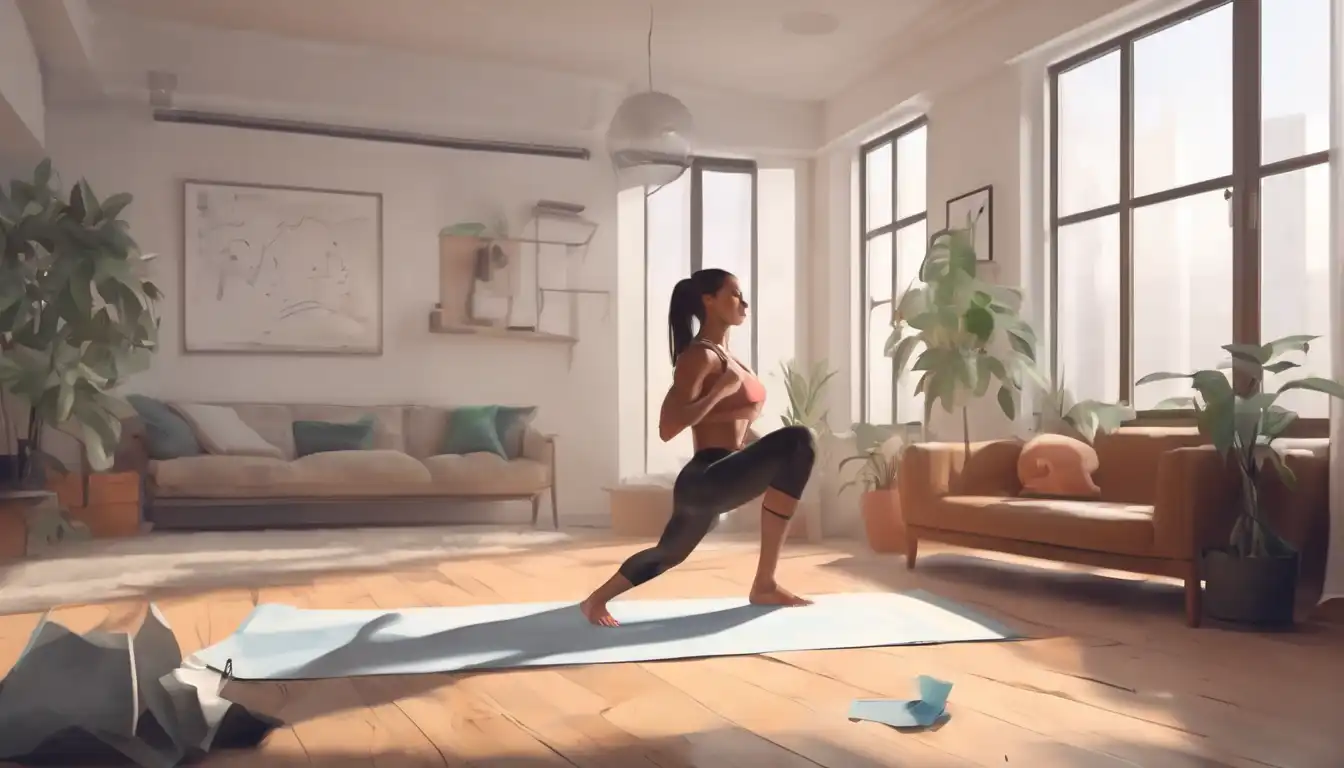Transform Your Fitness Journey with Zero Equipment
In today's fast-paced world, finding time to hit the gym can be challenging. However, effective home workouts with no equipment needed offer a practical solution for maintaining fitness without expensive memberships or complicated gear. Bodyweight exercises provide a comprehensive approach to strength training, cardiovascular health, and flexibility that can be performed anywhere, anytime.
Research shows that consistent bodyweight training can yield results comparable to traditional gym workouts. The key lies in proper technique, progressive overload, and consistency. Whether you're a beginner looking to start your fitness journey or an experienced athlete maintaining conditioning, no-equipment workouts adapt to your fitness level.
Core Bodyweight Exercises for Full-Body Conditioning
Push-Up Variations for Upper Body Strength
Push-ups remain one of the most effective upper body exercises, targeting chest, shoulders, triceps, and core muscles. Start with knee push-ups if you're new to this movement, gradually progressing to standard push-ups and advanced variations like decline or diamond push-ups. Aim for 3 sets of 8-15 repetitions, focusing on maintaining proper form throughout each repetition.
Squat Progressions for Lower Body Power
Bodyweight squats form the foundation of lower body training. Begin with basic squats, ensuring your knees track over your toes and your back remains straight. As you gain strength, incorporate jump squats or pistol squat progressions. These exercises engage quadriceps, glutes, hamstrings, and calves while improving functional movement patterns essential for daily activities.
Plank Series for Core Stability
Core strength is crucial for overall fitness and injury prevention. The plank exercise and its variations—including side planks, forearm planks, and plank with leg lifts—develop deep core stability. Hold each position for 30-60 seconds, focusing on maintaining a straight line from head to heels. Consistent core training improves posture and enhances performance in other exercises.
Creating Effective No-Equipment Workout Routines
Designing balanced workout routines ensures comprehensive muscle development and prevents plateaus. Consider alternating between strength-focused days and cardiovascular sessions. A sample full-body routine might include push-ups, squats, lunges, planks, and glute bridges performed in circuit format. Rest 30-60 seconds between exercises and complete 3-4 rounds for optimal results.
For cardiovascular health, incorporate high-intensity interval training (HIIT) using exercises like burpees, mountain climbers, and high knees. These movements elevate heart rate while building muscular endurance. Begin with 20-second work intervals followed by 40-second rest periods, gradually increasing work intervals as your fitness improves.
Progressive Overload Strategies Without Equipment
Progressive overload—the gradual increase of stress placed on the body during exercise—remains essential for continuous improvement. Without weights, achieve this through various methods: increase repetitions per set, reduce rest periods between exercises, perform movements more slowly to increase time under tension, or advance to more challenging exercise variations.
For example, progress from regular push-ups to decline push-ups by elevating your feet on a stable surface. Similarly, advance from basic squats to single-leg squats supported by a chair. Tracking your workouts in a journal or fitness app helps monitor progress and maintain motivation. Consider exploring our guide on fitness tracking methods for additional strategies.
Common Mistakes and How to Avoid Them
Proper form prevents injuries and ensures maximum effectiveness. Common errors include rushing through repetitions, incomplete range of motion, and neglecting proper breathing techniques. Focus on controlled movements, full extension and contraction of muscles, and exhaling during the most challenging phase of each exercise.
Beginners often overlook the importance of warm-up and cool-down routines. Dedicate 5-10 minutes to dynamic stretching before workouts and static stretching afterward. This practice improves flexibility, reduces muscle soreness, and enhances recovery. Learn more about effective warm-up techniques to optimize your training sessions.
Nutrition and Recovery for Optimal Results
Exercise represents only one component of fitness success. Proper nutrition fuels workouts and supports muscle repair. Ensure adequate protein intake for muscle recovery, complex carbohydrates for energy, and healthy fats for hormone production. Hydration plays equally important roles in performance and recovery.
Rest days allow muscles to repair and strengthen. Incorporate active recovery activities like walking or gentle yoga on non-training days. Quality sleep remains crucial for hormonal balance and muscle recovery. Discover how post-workout nutrition can accelerate your progress and enhance results.
Adapting Workouts for Different Fitness Levels
No-equipment exercises accommodate all fitness levels through modifications. Beginners should focus on mastering basic movements with proper form before advancing. Intermediate exercisers can increase volume or incorporate more challenging variations. Advanced individuals might explore combination movements like burpee pull-ups (using a doorframe) or plyometric exercises.
Listen to your body and progress at your own pace. Consistency trumps intensity when building sustainable fitness habits. If you experience pain beyond normal muscle fatigue, consult a healthcare professional before continuing. Our resource on exercise modifications provides additional guidance for tailoring workouts to your needs.
Long-Term Sustainability and Motivation
Building lasting fitness habits requires finding enjoyment in your routine. Vary exercises regularly to prevent boredom, set achievable goals, and celebrate milestones. Consider partnering with a workout buddy for accountability or joining online fitness communities for support.
Remember that fitness journeys feature ups and downs. Missed workouts happen—the important action is returning to your routine without self-criticism. Focus on how exercise makes you feel rather than solely on physical changes. This mindset fosters long-term commitment and overall well-being.
No-equipment home workouts offer accessible, effective fitness solutions for people with busy schedules, limited space, or budget constraints. With creativity and consistency, you can achieve remarkable results using only your body weight. Start today with simple exercises and gradually build toward more challenging routines as your strength and confidence grow.
